Cole Bros Circus #5
Posted By thecircusblog on August 23, 2012
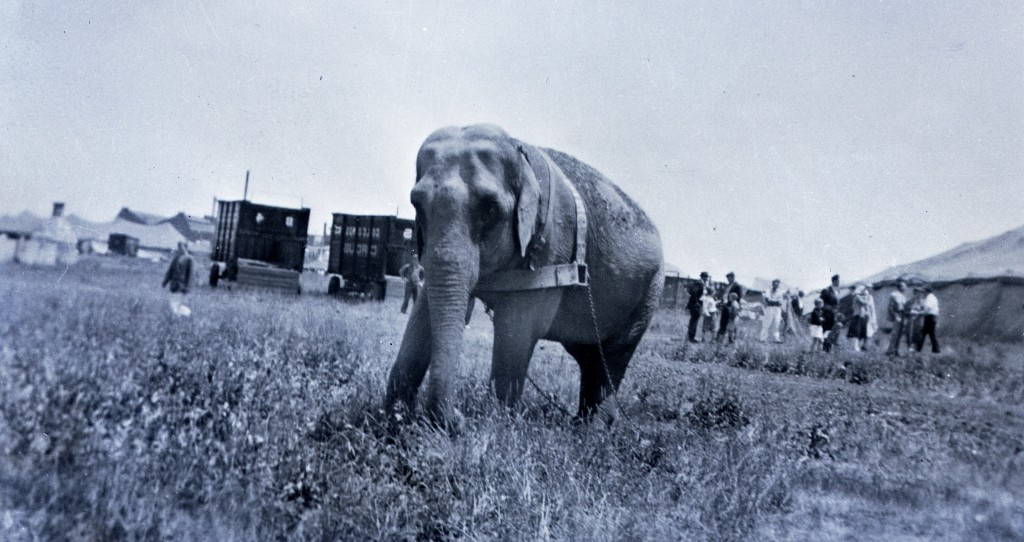 This photo was taken in 1937 on the Cole show lot. The elephant ….still in her working harness is partaking in a little wild grass snack.
This photo was taken in 1937 on the Cole show lot. The elephant ….still in her working harness is partaking in a little wild grass snack.
Posted By thecircusblog on August 23, 2012
 This photo was taken in 1937 on the Cole show lot. The elephant ….still in her working harness is partaking in a little wild grass snack.
This photo was taken in 1937 on the Cole show lot. The elephant ….still in her working harness is partaking in a little wild grass snack.
Posted By thecircusblog on August 23, 2012
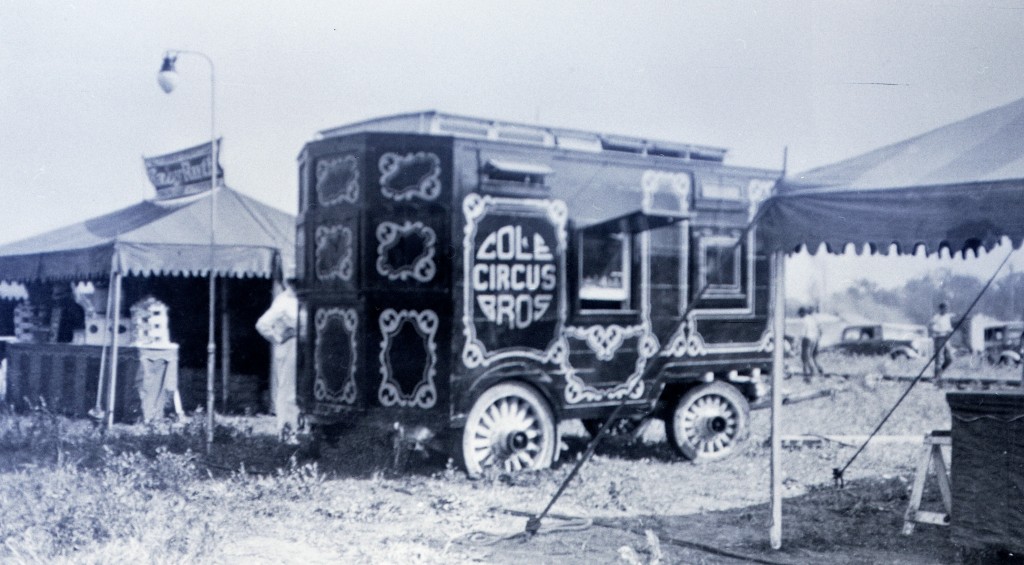 Cole Bros ticket wagon. This is a great looking wagon. Notice what I believe to be sky light window on the roof of the ticket office. Photo taken in 1937.
Cole Bros ticket wagon. This is a great looking wagon. Notice what I believe to be sky light window on the roof of the ticket office. Photo taken in 1937.
Posted By thecircusblog on August 23, 2012
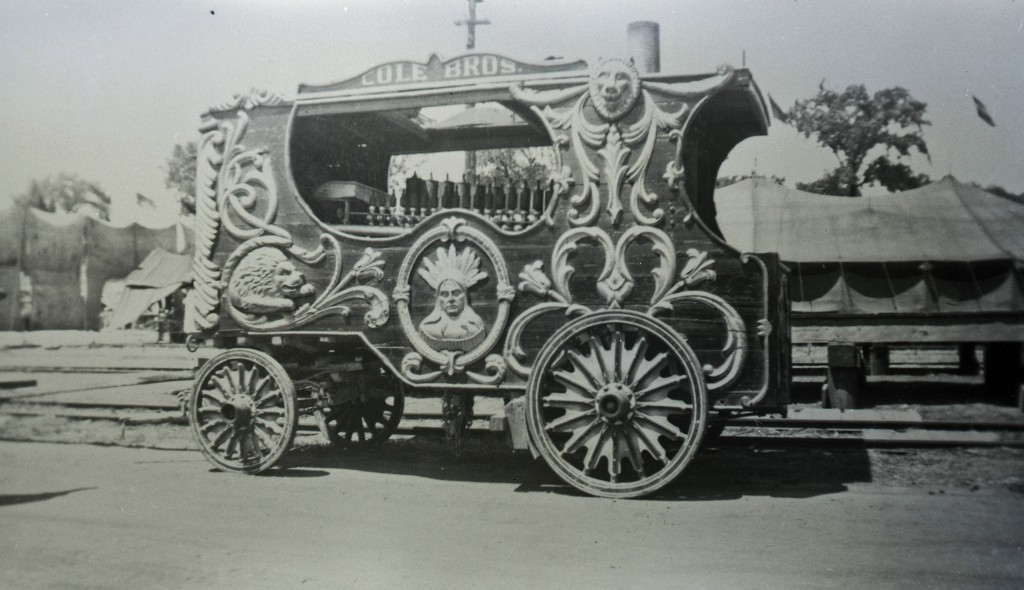 Cole Bros steam calliope. I understand from the information that I have the name of this calliope is “The Two Jesters”. This photo was shot on the show lot in 1936. I do not want to disclaim the information that I have, but I don’t see two jesters on the wagon. The custom caved art work is usually what the tableaus and wagons are named after because of there individual appearance. There is also a carved Indian head in the center.
Cole Bros steam calliope. I understand from the information that I have the name of this calliope is “The Two Jesters”. This photo was shot on the show lot in 1936. I do not want to disclaim the information that I have, but I don’t see two jesters on the wagon. The custom caved art work is usually what the tableaus and wagons are named after because of there individual appearance. There is also a carved Indian head in the center.
Stephen Flints comment has the information I was looking for on this calliope………Thanks.
Harry Kingston as well has made a comment.
Posted By thecircusblog on August 23, 2012
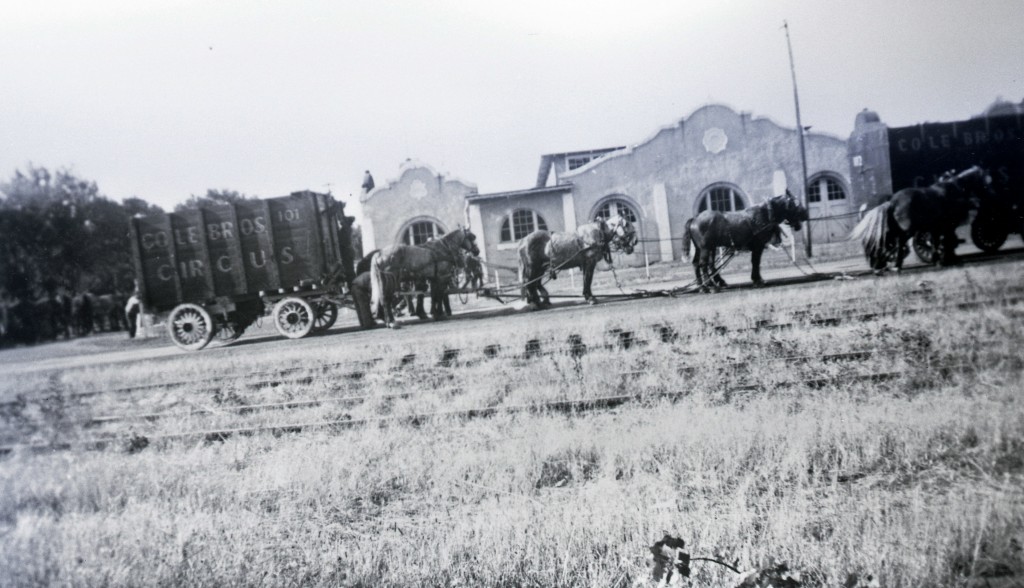 Eight horse hitches pulling a cargo wagon to the show lot. These wagons were most likely loaded with canvas.
Eight horse hitches pulling a cargo wagon to the show lot. These wagons were most likely loaded with canvas.
Posted By thecircusblog on August 23, 2012
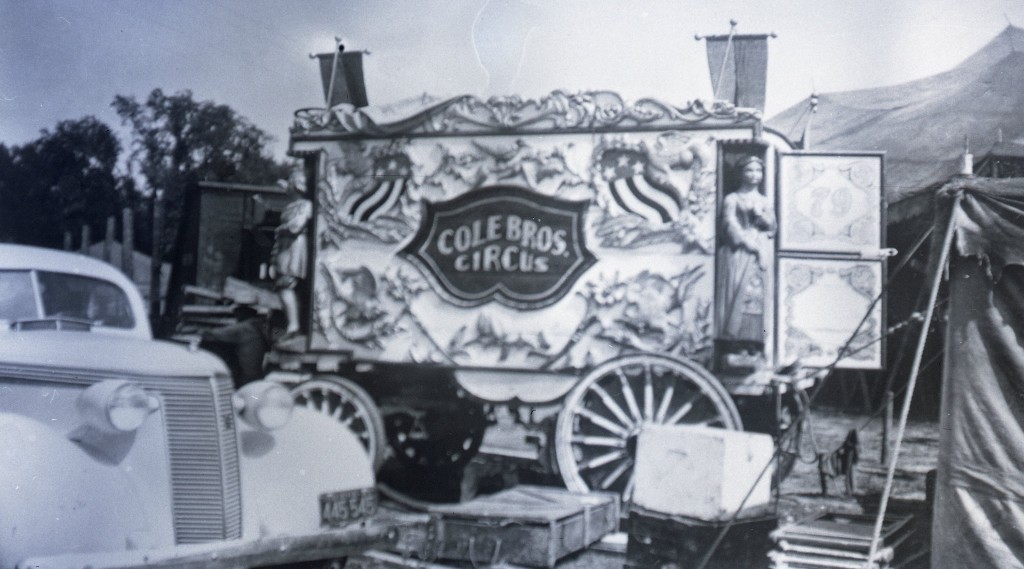 Cole Bros air calliope 1937. The opposite side of this wagon was open to show the calliope.
Cole Bros air calliope 1937. The opposite side of this wagon was open to show the calliope.
Good comment Steve.
Posted By thecircusblog on August 23, 2012
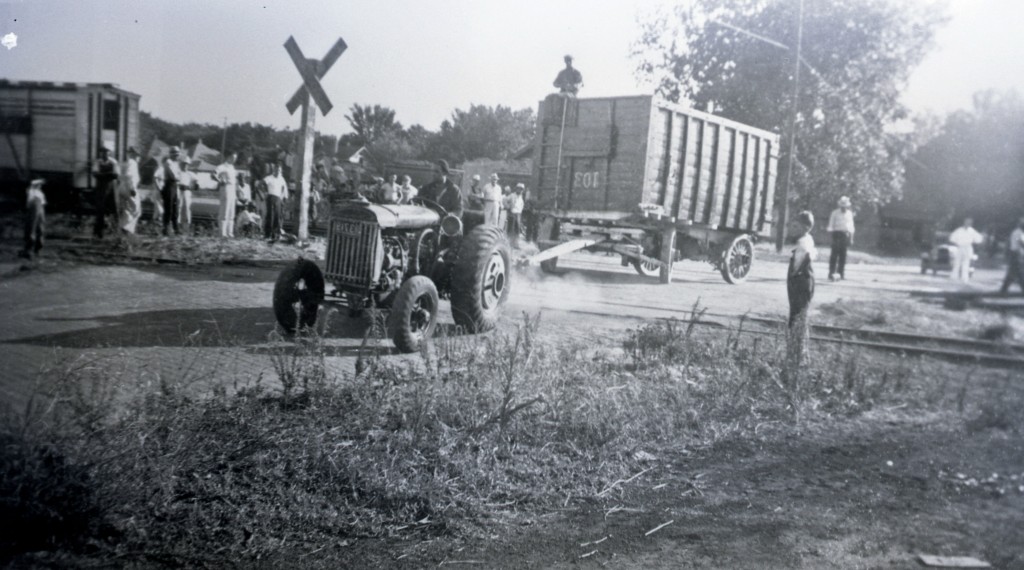 The use of tractors and Mack trucks was quite common on the circuses. This usually occured when there was a step hill or down grade. The tractor seems to be headed for a down grade. I notice a man on top of the wagon holding the brake wheel. Most all circus wagons had a mechanical brake that was used for slowing the wagon on a down grade, also they would set brakes on when parked. This is not to say it could not be done with horses, but it would take one more man on the wagon, teamster and a brakemen. Two men on a wagon, unless it was a parade was very rare.
The use of tractors and Mack trucks was quite common on the circuses. This usually occured when there was a step hill or down grade. The tractor seems to be headed for a down grade. I notice a man on top of the wagon holding the brake wheel. Most all circus wagons had a mechanical brake that was used for slowing the wagon on a down grade, also they would set brakes on when parked. This is not to say it could not be done with horses, but it would take one more man on the wagon, teamster and a brakemen. Two men on a wagon, unless it was a parade was very rare.
Posted By thecircusblog on August 17, 2012
Dear Ivan-
Posted By thecircusblog on August 17, 2012
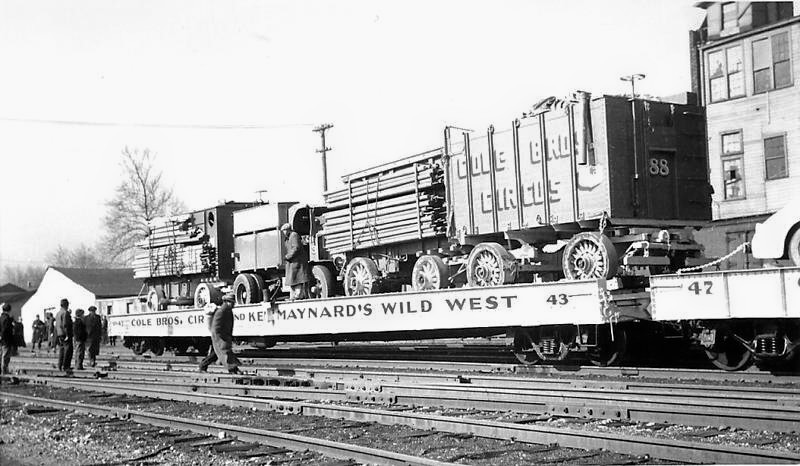 Cole Bros on rail siding. 194o……………… A Stephen T. Flint photo.
Cole Bros on rail siding. 194o……………… A Stephen T. Flint photo.
Wagon 88 hauled the big top canvas.
Posted By thecircusblog on August 17, 2012
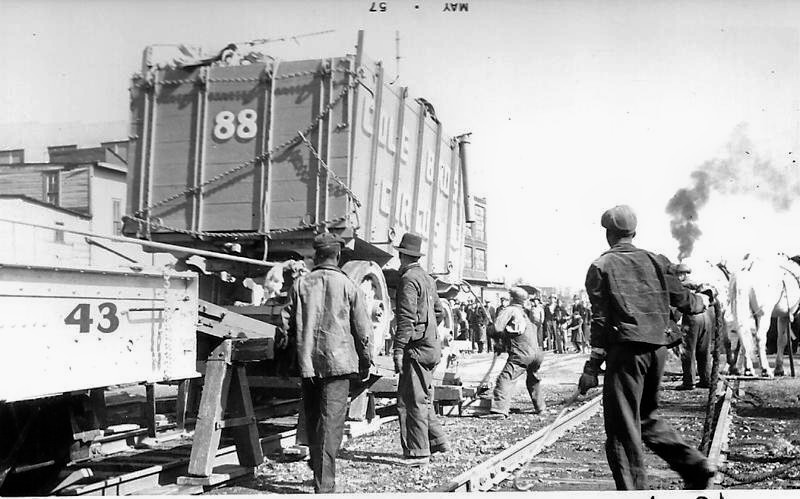 Wagon 88 unloading from the flat car 1940…………S.T. Flint photo.
Wagon 88 unloading from the flat car 1940…………S.T. Flint photo.